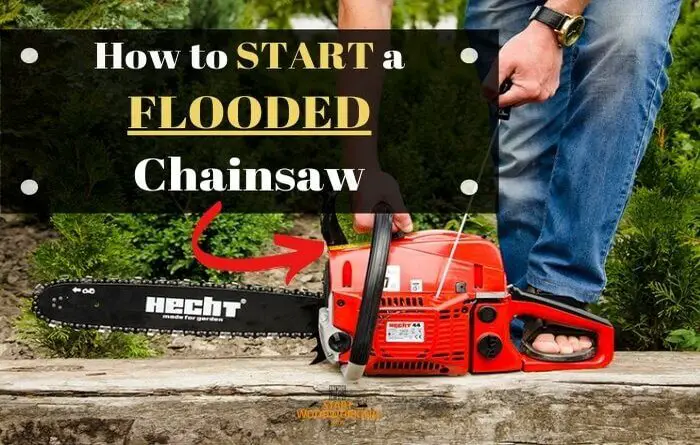How to Start a Flooded Chainsaw [Quick & Easy]
In this article we will see how to start a flooded chainsaw. If the engine will not start, the most likely failure is that your chainsaw has flooded due to over-priming of fuel or the choke has been left too open, causing too much fuel to enter the combustion chamber.
What is a flooded chainsaw ?
When the chainsaw floods, there is excess fuel in the combustion chamber that pushes out the oxygen needed for the spark to ignite the fuel. Cleaning a flooded carburetor on a chainsaw is basically cleaning the combustion chamber. When you clean the chamber, the fuel in the carburetor is also cleaned, making room for oxygen.
How to Start a Flooded Chainsaw Step by Step
What you will need:
- Spark plug wrench / Combination wrench
- Cloth or paper napkin
If your chainsaw is flooded, you start it by following the steps below:
Step 1: Place the chainsaw on a clean, flat surface.
Move the control lever to the lower position and remove the top cover. For different chainsaws, the cover can be removed in different ways, so we advise you to read the instruction manual first.
Step 2: Remove the top cover and see: cylinder, spark plug, air filter, control lever. But in our case, we are only interested in the spark plug cap and the spark plug itself. Locate the chainsaw engine’s spark plug but if you don’t know the exact location, consult the owner’s manual as the location may vary depending on the type of chainsaw.
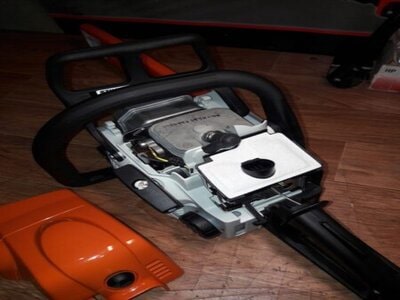
Step 3: Disconnect the high voltage cap from the spark plug. You need to act carefully, you do not need to pull with all your might. Otherwise, it can be pulled off the wire (installing the cap on the wire is a little problematic, you may need to contact the service center).
Step 4: Take the combination wrench (supplied with the chainsaw) and unscrew the spark plug. The spark plug is tightened tightly, so you have to make a little effort. Attach the spark plug wrench to the end of the spark plug and turn the wrench counterclockwise to loosen the spark plug. Once loosened, finish unscrewing it by hand and remove the spark plug from the chainsaw engine. Deactivate the chainsaw choke by pressing the choke control lever.
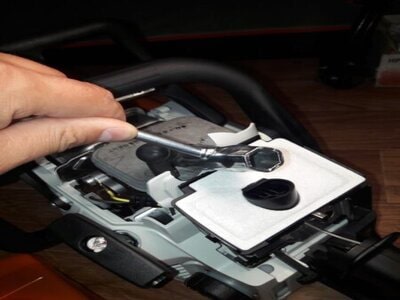
Step 5: Unscrew the spark plug and see that the electrode is wet with fuel. You need to dry it. Quickly pull the starter cord of the vacuum chainsaw several times while fully depressing the control lever.
Step 6: Wipe off any excess fuel from the tip of the spark plug. You can even soak it with a little gasoline and burn it lightly. Dry the spark plug better with a paper towel. You can also use an air compressor by simply blowing on the electrode. We also strongly advise against igniting the spark plug with an open fire (matches, lighter), since microcracks may appear on the ceramic insulator of the electrode and the spark plug will be unsuitable for further operation.
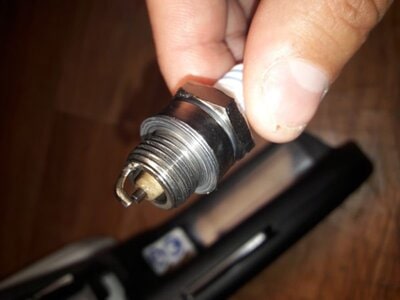
Step 7: Next we need to get rid of excess fuel in the combustion chamber. To do this, you need to turn the saw to the off position (in our case, move the control lever to the off position). This is necessary so that the spark does not “slip through” and the vapors ignite.
Pull the starter rope three times, while keeping your foot on the handle of the chainsaw. This cleans excess fuel in the combustion chamber and also allows oxygen into the chamber.
Do you want to clean your chainsaw ? Here is an easy tutorial which will help you a lot!
Step 8: Then, just plug the spark plug hole on the cylinder with the same paper napkin. Turn the saw over (cylinder down) and pull the starter 5-10 times. You can do without a napkin, but then the remnants of the fuel mixture will scatter around the chainsaw, which is contrary to safety regulations, and everything will be absorbed into it.
Reinsert the spark plug into its hole and tighten it with the spark plug wrench. We wrap the spark plug back into the cylinder (you need to tighten it tighter, but do not overdo it so as not to break the thread) and reinstall the high-voltage cap.
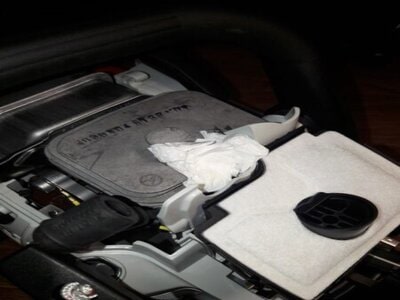
Step 9: Reinstall the top cover and prepare to start the chainsaw. But the start should take place with the carburetor throttle open, since there are residual fuel in the combustion chamber. To facilitate starting, you can hold the throttle triggers on. In the STIHL MS-180 chainsaw, simply move the control lever to the second position. Always start the chainsaw engine according to the manufacturer’s instructions.
Do you know how to measure your chainsaw bar? If not, then here is an easy guide I wrote for you!
Step 10: Start the chainsaw. Slide the choke lever to the fully open position and push it back to the half choke position. Make sure the power switch is in the “On” position. Pull the starter rope three times while holding the trigger. When the chainsaw starts, squeeze and release the trigger to allow the engine to return to idle speed. Then push the choke to the “Off” position.
If the saw smokes heavily for the first couple of minutes, do not be alarmed, the remaining fuel from the muffler will burn out. As you can see, there is nothing terrible and difficult here. With a certain skill, starting a flooded chainsaw takes no more than 5 minutes.
So now you know how to start a flooded chainsaw. The last piece of advice we can give you: When removing the spark plug, make sure you are facing the area where the spark plug is located, as fuel can spurt out when the spark plug is removed. If you want more tips and advice, here is this article on how to clean a chainsaw chain.
What are the cause for a flooded chainsaw?
Flooding is caused by too much gas applied at the wrong time and that prevent the chainsaw from starting. It is the main cause of a chainsaw engine stalling. As stated above, everything should now be off.
The main cause of a flooded spark plug on a chainsaw is excessive fuel consumption and can be caused by various reasons, in particular:
- Poor quality gasoline.
- Incorrect chainsaw starting sequence, which inexperienced owners often “do”.
- Clogged air filter, which no longer cope with its function.
- Failure of the ignition system.
- Incorrect carburetor adjustment
Colder weather or a chainsaw that has just been put away can complicate these instructions. Here’s more advice from a forestry forum poster: “If I haven’t gotten a pop in four pulls, I transition to part throttle position, no choke, and if I haven’t started in maybe 8 pulls, I go back to the choke for one or two pulls. I’m sure this varies with different chainsaws , but you shouldn’t have to pull many times in the choke position, even in cold weather. “
In this article I will show step by step how to start a chainsaw no matter the problem!
How to determine if a chainsaw is flooded?
If you suspect a flooded chainsaw spark plug, you must inspect it. With the help of a spark plug wrench, it is unscrewed and carefully examined.
If the spark plug is wet, but there is a spark, then it was definitely flooded. Many experienced owners are likely to determine the current state of a spark plug by its color.
This procedure is recommended to be carried out regularly. Light brown carbon deposits are exactly what all owners want to see. In this case, the functionality of the chainsaw is not impaired.
Black carbon deposits indicate an unbalanced mixture, namely, a lack of oxygen in the fuel chamber. If the situation does not improve, there is a high probability of refilling the chainsaw plug. If corrosion is detected on the plug or the distance between the electrodes is too large, then most likely a lean mixture is used.
Do you know how to put a chain back on the chainsaw? If not, I will show you how in this article!
How to prevent a chainsaw from flooding
Preventing a chainsaw from flooding may not be a feasible task. All two-stroke chainsaw engines tend to flood when cranked too far. Sometimes a chainsaw engine will flood because it has not been used for a while and the operator has not operated it properly after a period of inactivity. Additionally, temperature, specifically cold, has an adverse effect on the successful starting of a flooded chainsaw.
There are several steps you can take to prevent a chainsaw from flooding:
Step 1: Remove the gas and oil from chainsaw when storing
If your chainsaw is used for casual or seasonal use, you should drain all the fluid from it before storing. The chainsaw is powered by a two-stroke engine with gas and oil. When draining the fluid, be sure not to spill anything on the motor. Never store the chainsaw with the engine pointing downwards.
Step 2: Remove the spark plugs before storing
Another idea that many professional loggers talk about is removing the spark plug from the chainsaw when storing it. Be sure to store the spark plug in a cool, dry place until the chainsaw is needed next season. If there are any signs or corrosion, clean the plug or replace it before the next use of the chainsaw.
Step 3: Starting up the chainsaw correctly
The first cause of flooding a chainsaw’s two-stroke engine is improper starting. Usually beginners chainsaw operators get anxious when trying a cold start that leads to engine flooding.
To start a chainsaw from a cold start, open the throttle, turn the switch to the on position, and pull the starter cable three or four times or until you hear a “pop.” Then stop.
Turn the throttle to the off position and re-pull the cable three or four times or until it starts. If it doesn’t start, repeat the process again. Always make sure you have a good spark plug.
Step 4: Do not force the chainsaw to start
Sometimes making a cold start on any two-stroke chainsaw engine requires a few tries until it is started successfully. One of the common mistakes made is overdriving the throttle or choke, which usually ends with flooding of the engine.
Step 5: If it floods
If you think the chainsaw engine has flooded (the strong smell of gasoline is a good sign), try turning off the ignition switch, as well as the throttle or choke. Let it rest for a few minutes.
Some loggers even suggest that you remove the spark plug and pull the wire several times with all the switches in the off position. Once you have accomplished this, replace the spark plug. Try turning the chainsaw again with the choke on and the throttle in the off position.
Step 6: Listen to the pop
With the choke on and off, pull the cable several times until you hear the popping sound. Do this only once. Continuing to pull the cable through multiple bursts with the choke engaged will re-flood the engine.
After a pop, give the cable one or three tugs to start. Try this without the throttle first and then if it doesn’t start, give it a try.
Conclusion
If the problem has already overtaken you, and you do not know what to do, it is not necessary to immediately go to the workshop, it is enough to carefully read our article and, for visual perception, to watch the practical videos and you will know how to start a flooded chainsaw.
Always try to buy spark plugs for chainsaws in advance so that in such unforeseen situations your plans for the work done do not suffer.
After all, the spark plug is the main component of the ignition, respectively, of the start of the operation of the entire mechanism of any of the gasoline-powered tools, therefore, knowing how to start a flooded chainsaw will be useful to both a beginner and an experienced user.

